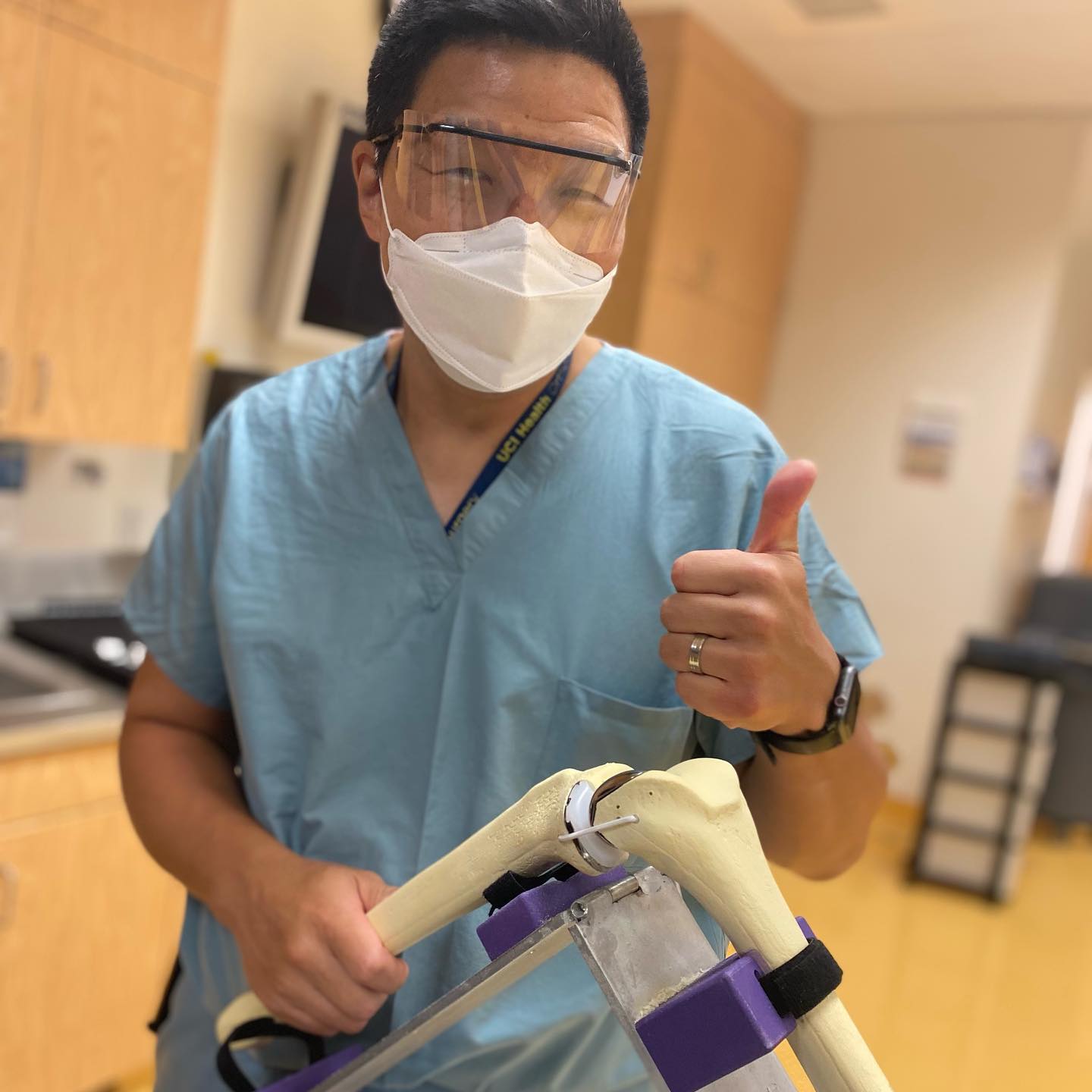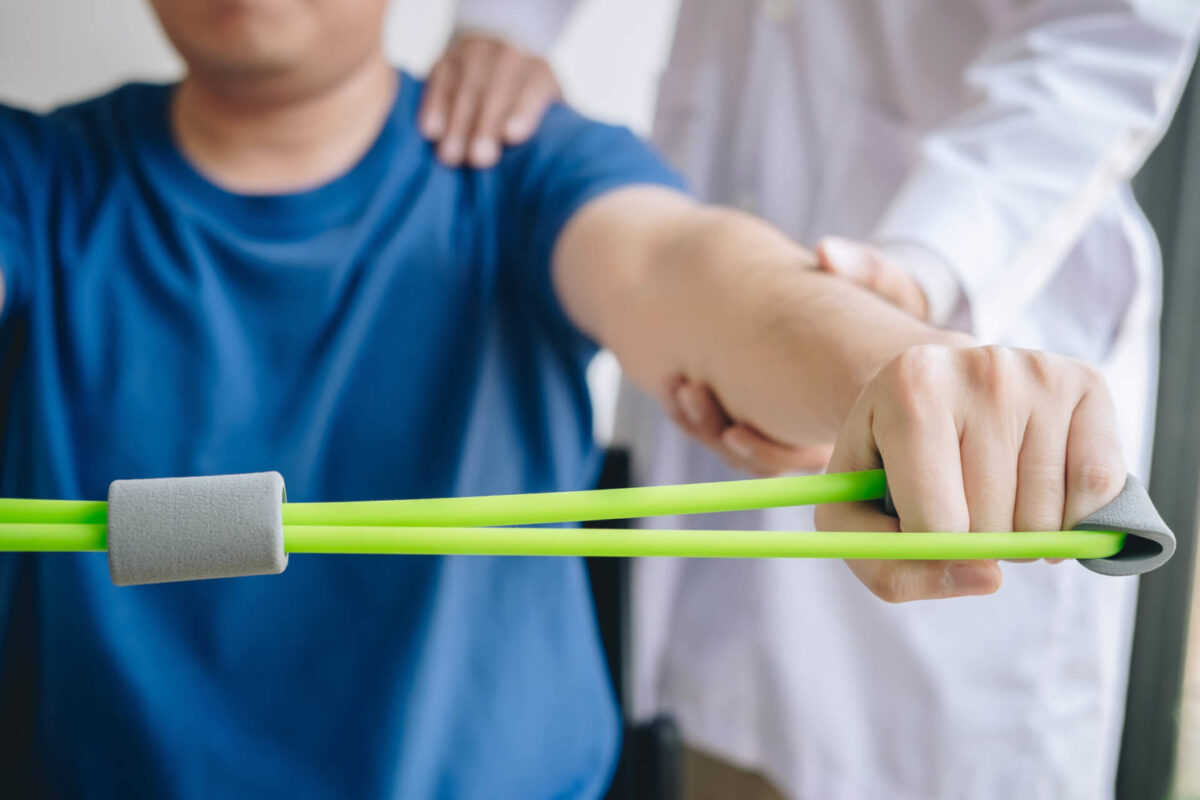


A unicompartmental (partial) knee replacement is a reasonable option when arthritis in the knee is limited to one section. Advantages include a more normal feeling knee compared to a total knee replacement. The incision is smaller and the surgery shorter, both of which may lead to less post-operative pain and a faster recovery.
Studies looking at large numbers of surgeons show that unicompartmental knee replacements account for less than 5% of knee procedures for the majority. So although the surgery is limited to only one compartment out of the three, unicompartmental knee replacements can pose distinct challenges. Research shows that they are revised earlier than total knee replacements on average.
A unicompartmental (partial) knee replacement is a reasonable option when arthritis in the knee is limited to one section. Advantages include a more normal feeling knee compared to a total knee replacement. The incision is smaller and the surgery shorter, both of which may lead to less post-operative pain and a faster recovery.
Studies looking at large numbers of surgeons show that unicompartmental knee replacements account for less than 5% of knee procedures for the majority. So although the surgery is limited to only one compartment out of the three, unicompartmental knee replacements can pose distinct challenges. Research shows that they are revised earlier than total knee replacements on average.
DR. DAVID SO FIRST IN SOUTHERN CALIFORNIA TO USE NEW TECHNOLOGY FOR PERSONALIZED PARTIAL KNEE REPLACEMENTS
ORANGE, California 9/28/2021 – Dr. David So with UCI Health is now using new technology to offer personalized partial knee replacements to patients in the area.
The Truliant Reflex Uni™ by Bodycad offers custom implants tailored to each individual patient undergoing partial knee replacement surgery. A partial knee replacement is performed when damage caused by osteoarthritis is confined to only one compartment of the knee – also referred to as unicompartmental knee arthritis. Only the damaged part of the knee cartilage is replaced with an implant prosthesis. This procedure can be more conservative than a total knee replacement.
“A unicompartmental knee replacement is a reasonable option when arthritis in the knee is limited to one section. Advantages include a more normal feeling knee compared to a total knee replacement. The incision is smaller and the surgery shorter, both of which may lead to less post-operative pain and a faster recovery,” said Dr. So.
Leveraging the latest in 3D printing technology, Truliant Reflex Uni uses a proprietary software algorithm, innovative 3D image rendering, digital planning and a production system to develop implants personalized to each patient’s unique anatomy. Using a CT scan of the patient’s knee and this advanced technology, surgeons can obtain a more exact fit of the knee replacement implant.
“Research looking at large numbers of surgeons show that unicompartmental knee replacements account for less than 5% of knee procedures they perform. Although unicompartmental knee replacement surgery is limited to only one compartment out of the three, it can pose distinct challenges. Research shows that they are revised earlier than total knee replacements on average.
One way to improve outcomes may be to use custom cut guides with custom implants. Older technology led to guides that often did not fit which meant the surgeon had to bail out to traditional manual instruments,” said Dr. So.
Studies have shown that significantly more partial knee replacement patients would choose to have their operation again, compared to total knee replacement patients.1
Other benefits of partial versus total knee replacement include retention of the ACL, which can result in improved proprioception2,3 and better range of motion.4,5 Proprioception is the body’s ability to sense its location and movements. An example of this is walking or kicking without looking at the feet.
For more information about partial knee replacement or to schedule an appointment with Dr. David So, call 714-456-7012 or visit www.uciortho.edu.
About Dr. David So
Dr. David So is a board-certified, fellowship-trained orthopaedic surgeon who specializes in joint replacement for the treatment of hip and knee arthritis. He received advanced training in patient-centered joint replacement techniques, including minimally invasive, anterior-approach hip replacement, computer-assisted hip and knee arthroplasty, partial knee replacement, as well the use of medial pivot and custom knee implants. He also has significant experience treating patients with failed or infected hip and knee replacements.
So received his medical degree from Wayne State University School of Medicine in Detroit. He completed a residency in orthopedic surgery at Henry Ford Hospital, Detroit, followed by a fellowship in adult reconstructive surgery at the University of Pennsylvania, Philadelphia.
His research interests include studying the effects of computer-assistance during joint replacement surgery on patient outcomes, improved post-operative pain control utilizing pre-operative cryoneurolysis, periprosthetic joint infections and the risk factors associated with the failure of two-stage reimplantation procedures, as well as patient outcomes after total knee replacement using kinematic alignment with a medial-pivot implant.
References:
- Beard D, Price A, Davies L, et al. A Multicentre Randomised Study Comparing Total or Partial Knee Replacement – One Year Results of The Topkat Trial. BASK. Liverpool, UK 2016.
- Pritchett, JW. Patients Prefer A Bicruciate-Retaining or the Medial Pivot Total Knee Prosthesis. Journal of Arthoplasty. Vol. 26 No. 2 2011.
- Katayama, M. et al. Proprioception and Performance After Anterior Cruciate Ligament Rupture. International Orthopaedics (SICOT)
- Amin A, et al. Unicompartmental or Total Knee Replacement? A Direct Comparative Study of Survivorship and Clinical Outcome at Five Years. JBJS Br. 2006; 88-B; Suppl 1, 100.
- Jones, GG, et al. Gait comparison of unicompartmental and total knee arthroplasties with healthy controls. Bone Joint J 2016;(10 SupplB):16–21.






